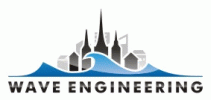Increased shipping activities have made the already environmentally sensitive Baltic Sea and its coastal areas at risk for pollution and the unintended introduction of invasive species. The BONUS+ BalticWay project attempts to identify the regions that are associated with increased risk to other sea areas and to propose ways to reduce risk of being polluted in the Baltic Sea by placing activities in other areas that may be less affected.
A solution to this inverse problem is sought by means of statistical analysis of a large pool of solutions to an associated direct problem of current-driven transport of adverse impact. We report results of the analysis of a large ensemble of Lagrangian transport paths of water and pollution particles. The trajectories are calculated with the use of TRACMASS code (Döös, 1995, de Vries and Döös, 2001) from pre-computed velocity fields. We investigate a pool of trajectories covering several years for the Gulf of Finland. The goal is to evaluate the basic parameters of current-driven transport that cannot be extracted directly from the velocity data.
